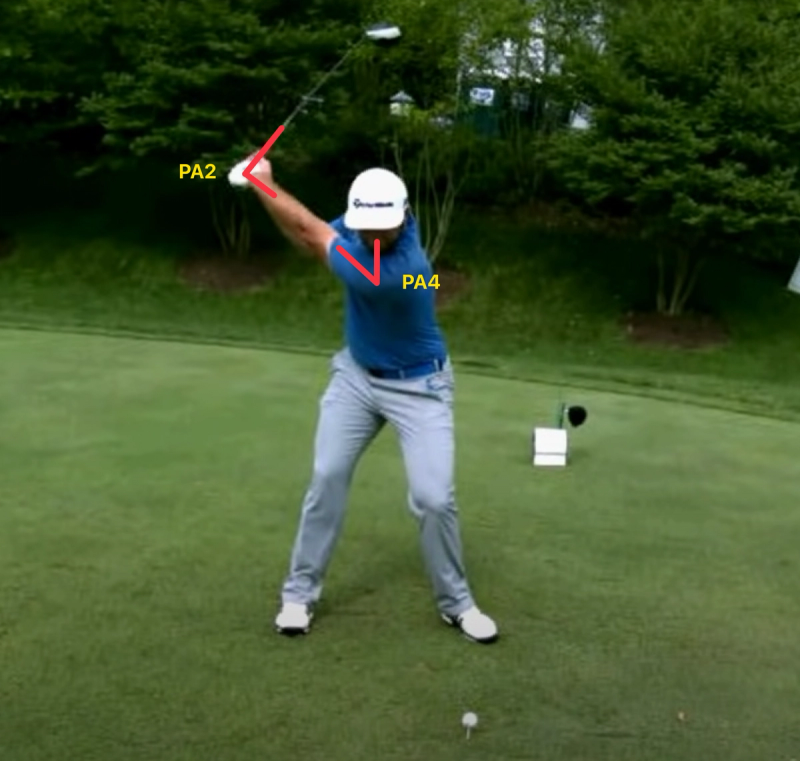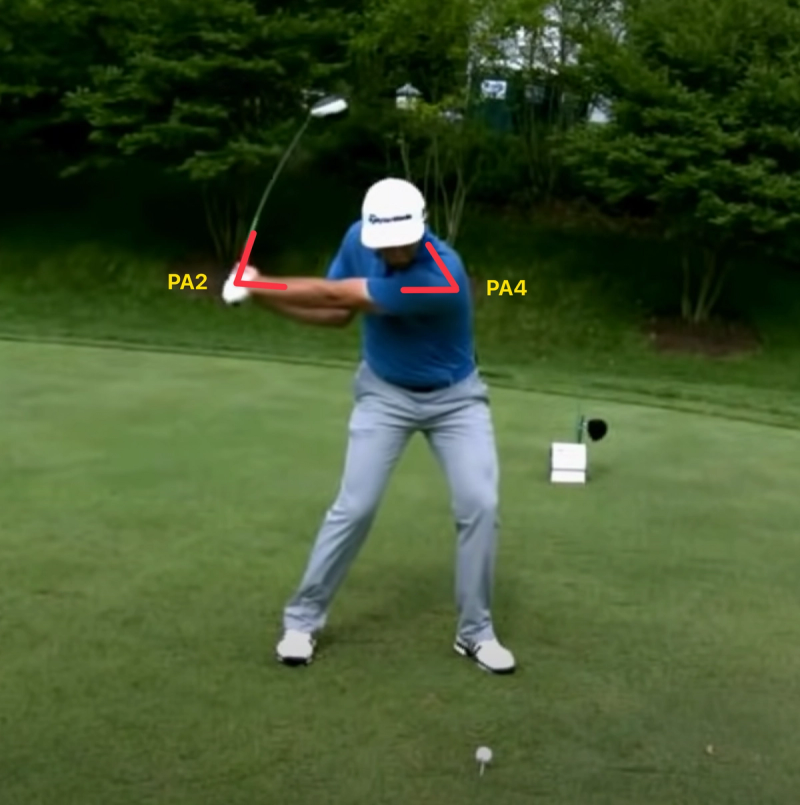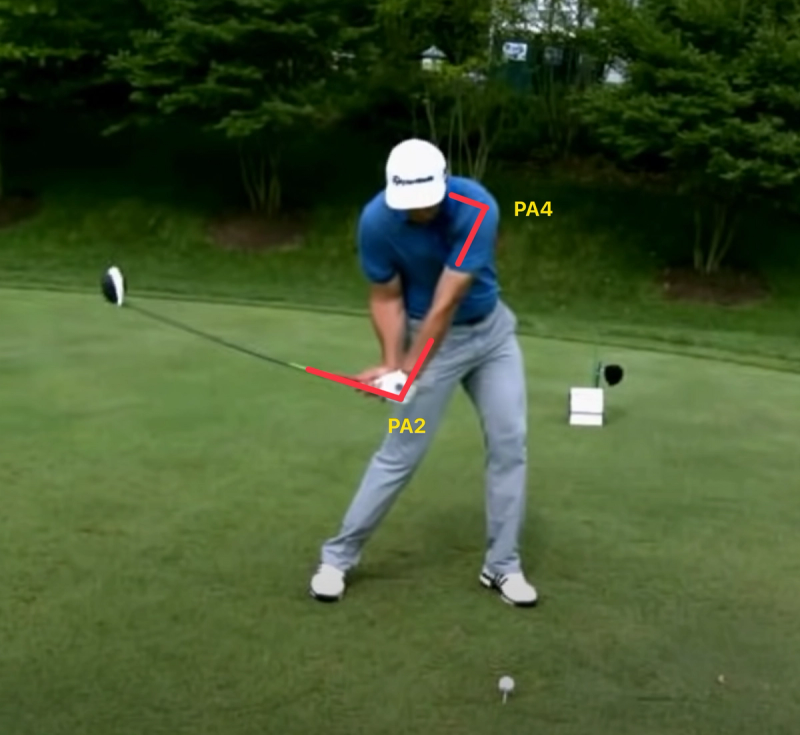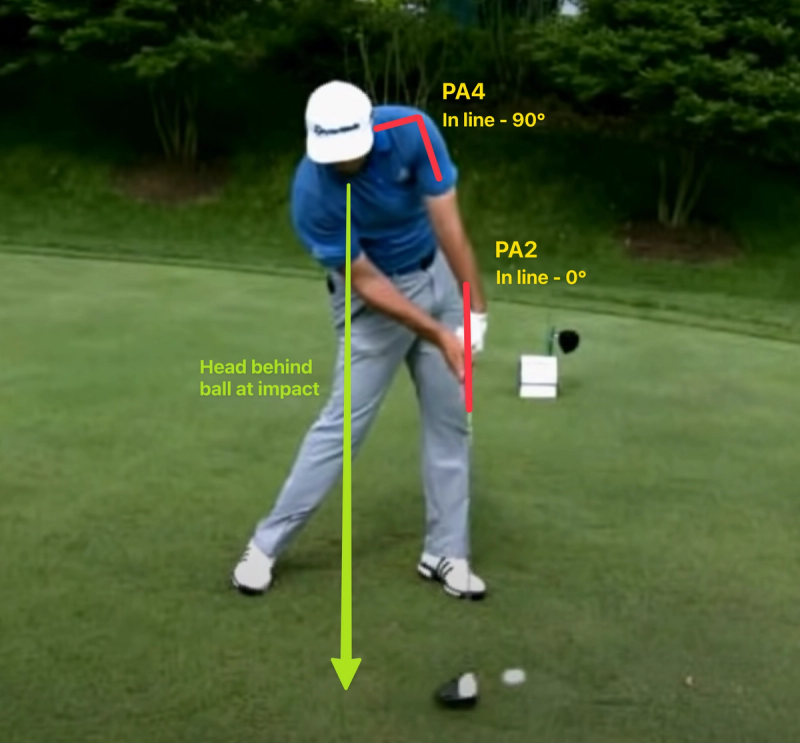This week, we're going to take a look at Jon Rahm's swing and learn how he can generate so much power (he ranks #10 on Tour!) despite having a short backswing (only a 3/4 swing).
Jon Rahm's Story
You may be surprised to find the reasons for Jon Rahm's short backswing:
- Medical Condition - Rahm has spoken openly about how his right foot had to be broken at birth and developed slower than his left, leaving him with limited mobility. This forces him to swing a bit shorter than most tour pros.
- Swing Coach - growing up playing tree-lined courses in Spain that required precision off the tee, Rahm's coach had him do a drill where he would take a 1/2 backswing and try to hit the ball as FAR as he possibly could. This forced Rahm to learn how to generate power with the lower body, something that most amateurs struggle with.
With that context, we can now dive into the mechanics that allow Rahm to generate this effortless power despite taking 3/4 swings with his driver!
How is power generated in the golf swing?
- "Drive your lower body"
- "Get wide"
- "Swing from the inside"
- "Generate lag"
- "Explode from the hips"
You've probably heard one or ALL of these.
But have you been able to translate them into any tangible results?
Probably not.
Because these are characteristics of a powerful swing, but not the SOURCES.
If you break the swing down from a physics standpoint, there are just a handful of sources of power.
Below, we're going to walk through a face-on view of Rahm's swing to uncover some of these sources.

We'll start with the top of the golf swing (P4).
YES, YOU HEARD ME. This is the TOP of Rahm's golf swing!! It only goes back about 3/4 of the way!
Two of the major sources of power in any golf swing is what we call "PA2", or "power accumulator #2" and "PA4" or "power accumulator #4".
A golfer gets his/her power by loading these:
- PA2 - "wrist cock", which creates a 90 degree angle between the left arm and the club shaft
- PA4 - straight left arm at top of swing, which creates a 45 degree angle between the shoulders and the left arm
As we move through the downswing into impact, I want you to notice how long Rahm is able to maintain these power angles.

At position 5 (P5) in the downswing, notice how Rahm has maintained ALL of these power angles.
He does this by initiating the swing with the lower body and letting the upper body follow along for the ride while maintaining his "power package".

At position 6 (P6) in the golf swing, we can start to see Rahm's secret sauce.
There are VERY FEW golfers, or even tour pros for that matter who can maintain these power angles this late in the downswing.
When power accumulator #2 (PA2) maintains a 90-degree angle for this long, that's what we might call MASSIVE LAG.
Rahm achieves more lag in his swing than most golfers, and he does it by keeping his upper body "quiet" and letting the lower body pull everything through the impact zone.
From this point, the club has a lot of distance to travel, while Rahm's hands will only be moving a few inches. This creates a "whip" that cracks right into impact for a powerful strike.

At impact, Rahm has released both of the highlighted power accumulators.
Notice how PA4 has moved from a 45-degree angle at the top of the swing to a 90-degree angle at impact, while PA2 has moved from a 90-degree angle just moments before impact to a 0-degree angle at impact.
While we're here, a few other things to point out:
- Rahm has a "flat left wrist" through impact (actually, it's bowed a little, which is MUCH BETTER than having it "cupped" at impact)
- Rahm's head is behind the ball, which will allow him to fully release that right arm through impact (as you'll soon see)

Having his head behind the ball allows Rahm to fully release that club through impact, which will then pull his body into the finish position (rather than an active movement).
What YOU can learn from Rahm's EFFORTLESS power
"So Zach, this is great and all, but how can I achieve these positions in MY swing??"
This week when you're at the range, try this simple drill:
- Grab a 9-iron, or another short iron
- Take a 1/4 to 1/2 swing (it will feel weird)
- Try to hit the ball as far as you can, focusing on 2 things:
Let the lower body propel the swing. Just take the club back, fire the lower body, and let the hands and arms "tag along for the ride" Notice the pressure you feel between your grip and your right index finger as the club changes from backswing to downswing.
While it might take you a few shots to hit a good one, this is an excellent way to teach your body what a "lower body initiated downswing" feels like.
Using just a 9-iron, work your way from a 1/4 backswing all the way to a full backswing trying to hit the ball as far as you can. You might be surprised at the results.
